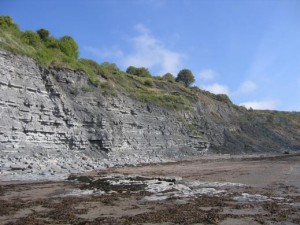A Review of the Dimorphodon Flying Reptile Model (Safari Ltd)
A recent addition to the Wild Safari Dinosaurs and Prehistoric Life model series made by Safari Ltd is this replica of an early pterosaur, a flying reptile known as Dimorphodon. The first fossils of this Jurassic creature were found by Mary Anning as she searched for specimens along what is now known as the “Jurassic Coast”. This fossil was found in 1828 (although some sources claim 1827) and it is currently housed in the Natural History Museum in London, although it is rarely displayed as this specimen is missing its head.
Dimorphodon
Frustratingly, little is known about the origins and evolution of the flying reptiles but thanks to a handful of excellent fossil specimens, palaeontologists have been able to piece together, literally in most cases, quite a bit of data about Dimorphodon. It is one of the better known members of the Pterosauria with fossils having been found in Europe and a possible second species having been identified from fossil material of Early to Middle Jurassic age from Mexico.
The Wild Safari Dinos Dimorphodon Flying Reptile Replica
Picture credit: Safari Ltd
“Two Form Tooth”
The genus name means “two form tooth”, a reference to the different size and shape of the teeth, an observation first noted by Sir Richard Owen, the man responsible for coming up for a name for the Dinosauria. The model makers at Safari Ltd have been careful to depict their Dimorphodon with the teeth at the front of the jaws being long and fang-like with smaller teeth towards the back of the mouth, accurately reflecting what is seen in the fossil material.
The head of the Dimorphodon model is quite broad and deep. Again this mirrors what is found in the fossil record. Proportionately, the head is much larger than that seen in other long-tailed Jurassic pterosaurs. It has been estimated that Dimorphodon may have weighed almost twice as much as similar sized flying reptiles.
This said, the bones in the skull are extremely thin and light, little more than struts and studies suggest that Dimorphodon had a relatively weak bite. Although, found in coastal and marine deposits many palaeontologists believe that this pterosaur may not have dined exclusively on fish as was previously thought. Its main prey may have been insects.
Wild Safari Dinos Dimorphodon
Safari Ltd have painted their Dimorphodon replica in predominantly tan and dun colours, with the wing membranes given brown and black markings on their dorsal surface and brown underneath. This contrasts nicely with the lighter colouration on the pterosaur’s body. The skin has been textured to give the impression of a covering of fine, downy, insulating body hair.
This pterosaur had large eyes and it is pleasing to note that this detail has been picked up by the design team with the head of this figure particularly well painted and the eyes are very prominent.
We think this model represents Dimorphodon macronyx, the species found by Mary Anning almost two hundred years ago now. The species name means “big claws” in reference to the large claws on the forelimbs which were probably used to help this pterosaur climb trees or up cliffs. Safari Ltd have given their Dimorphodon large and curved finger and toe claws, once again reflecting the known fossil material.
The Famous Fossil Location – the “Jurassic Coast” at Lyme Regis
Picture credit: Everything Dinosaur.
A Long Tail on the Model
The model has a long tail, Dimorphodon is known to have had a least 30 vertebrae making up its tail. Safari Ltd have also tipped the tail with a diamond shaped rudder, although we are not certain as to whether or not Dimorphodon actually possessed such a feature. Mathematical models assessing the flight capabilities of this pterosaur with its relatively heavy body and its broad wings suggest that taking to the air was energetically demanding and when airborne flight may have been somewhat laboured, Dimorphodon flight trajectories have been described rather unflatteringly as a “graceful plummet”.
It is always a pleasure to see a member of the Pterosauria added to a model range, especially one with links to the Jurassic coast of southern England and this well-crafted replica is already proving popular with serious collectors.
To view the range of prehistoric animal models (Safari Ltd) available from Everything Dinosaur: Wild Safari Prehistoric World Models.
Dimorphodon may have been the first pterosaur to have been closely studied in England, it was only the third pterosaur genus to be established and it has enabled scientists to piece together more information about the flight capabilities and feeding habits of flying reptiles. Other pterosaurs such as Pteranodon may be more common in model collections, but it is great to see a replica of Dimorphodon included in the Wild Safari Dinos model range.




Leave A Comment